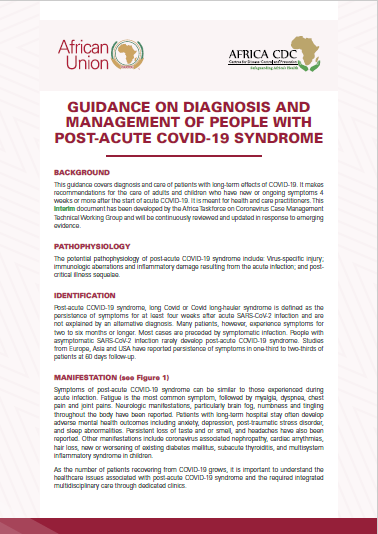BACKGROUND
This guidance covers diagnosis and care of patients with long-term effects of COVID-19. It makes recommendations for the care of adults and children who have new or ongoing symptoms 4 weeks or more after the start of acute COVID-19. It is meant for health and care practitioners. This interim document has been developed by the Africa Taskforce on Coronavirus Case Management Technical Working Group and will be continuously reviewed and updated in response to emerging evidence.
PATHOPHYSIOLOGY
The potential pathophysiology of post-acute COVID-19 syndrome include: Virus-specific injury; immunologic aberrations and inflammatory damage resulting from the acute infection; and postcritical illness sequelae.
IDENTIFICATION
Post-acute COVID-19 syndrome, long COVID or COVID long-hauler syndrome is defined as the persistence of symptoms for at least four weeks after acute SARS-CoV-2 infection and are not explained by an alternative diagnosis. Many patients, however, experience symptoms for two to six months or longer. Most cases are preceded by symptomatic infection. People with asymptomatic SARS-CoV-2 infection rarely develop post-acute COVID-19 syndrome. Studies from Europe, Asia and USA have reported persistence of symptoms in one-third to two-thirds of patients at 60 days follow-up.
